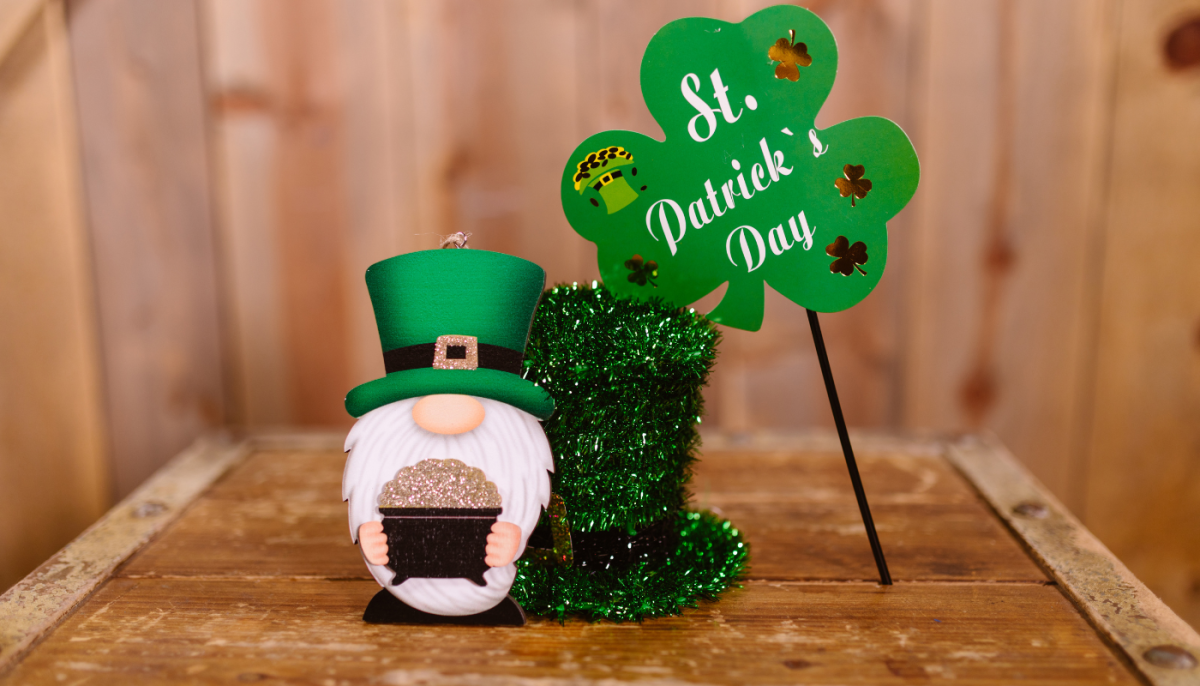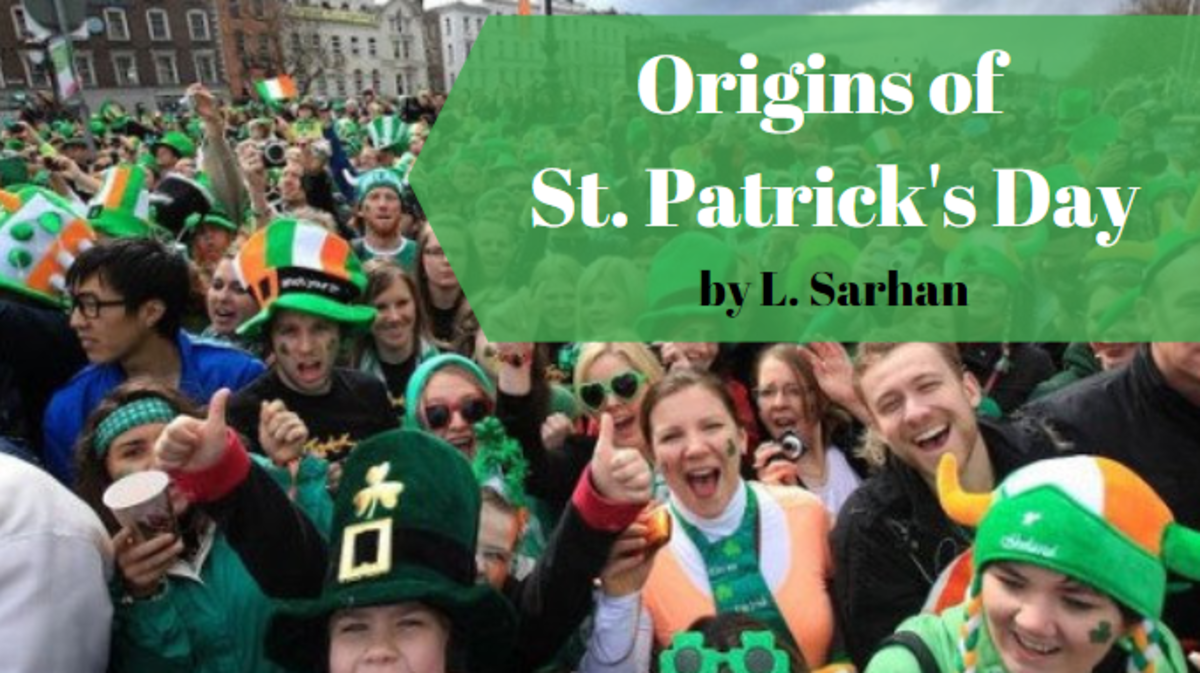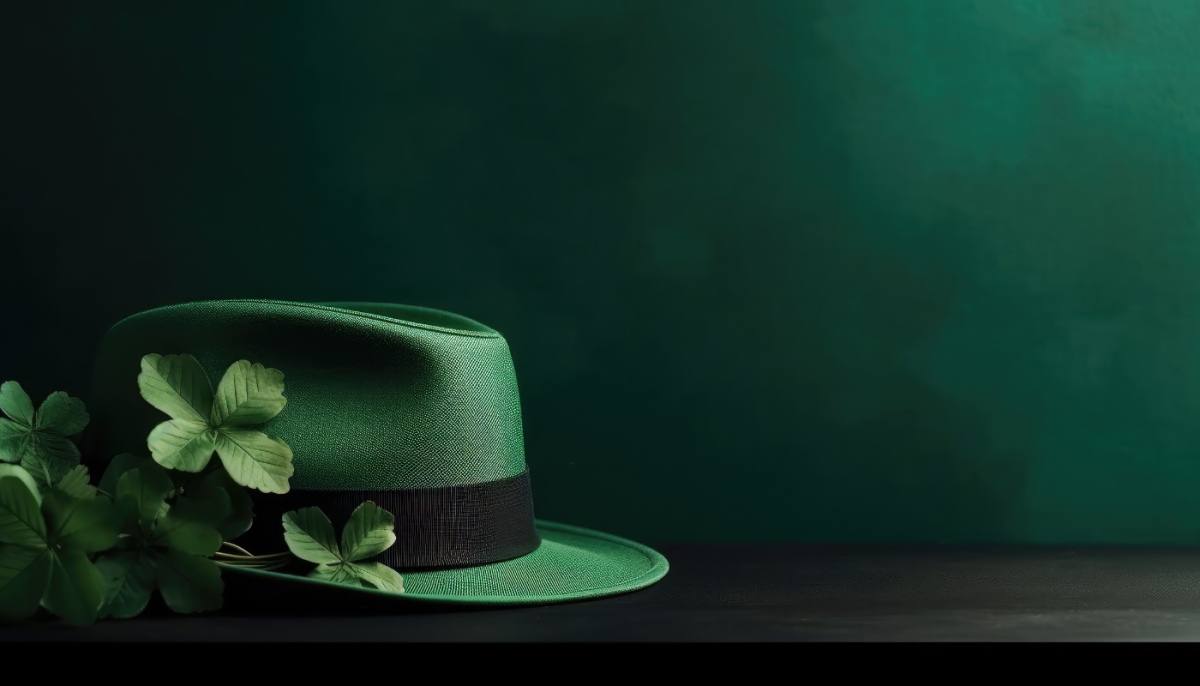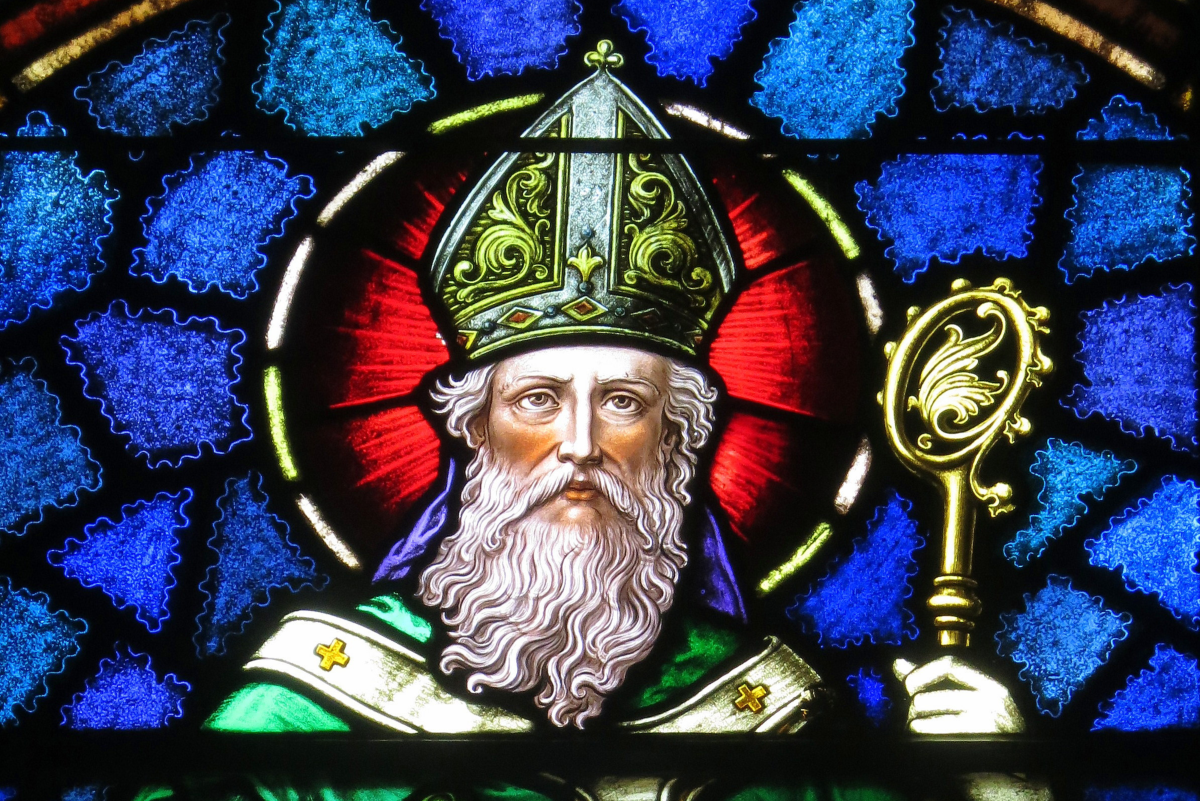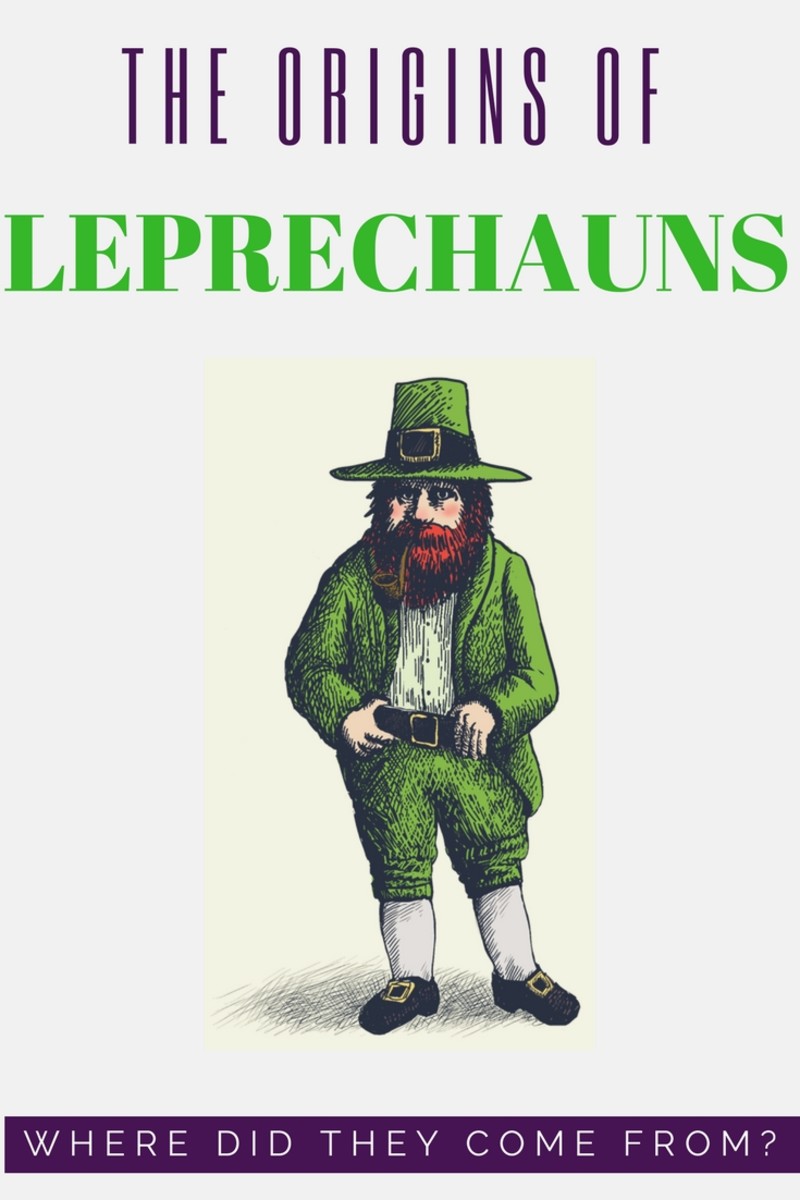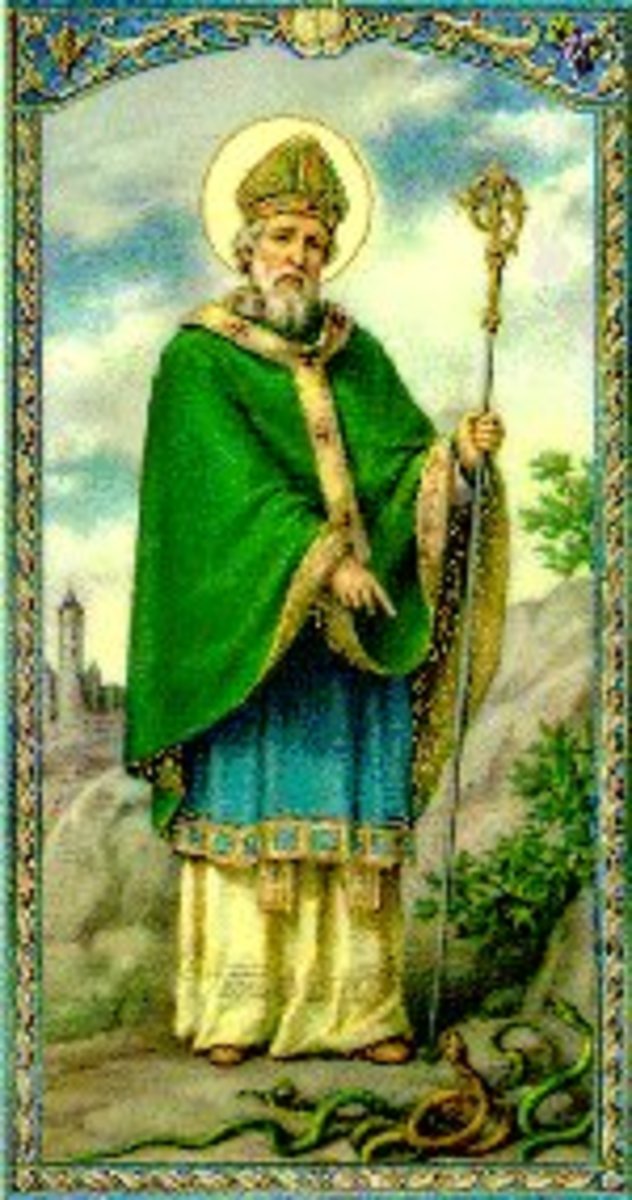St. Patrick's Day Louisiana
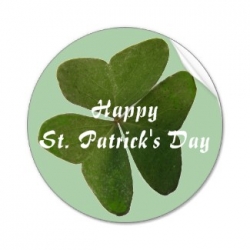
Patron Saint of Ireland
Both Al and I can trace part of our ancestry back to the Emerald Isle, so we enjoy celebrating St. Patrick's Day. The history of St. Patrick, the Patron Saint of Ireland is also very interesting to us. St. Patrick's Day is widely celebrated and is filled with merriment and often, drunken joy. However, many do not know that its namesake, Patrick, was a holy man and a bishop of the Catholic Church. This page contains both the historical aspects of this day and the fun.
Ireland's Patron Saint
History
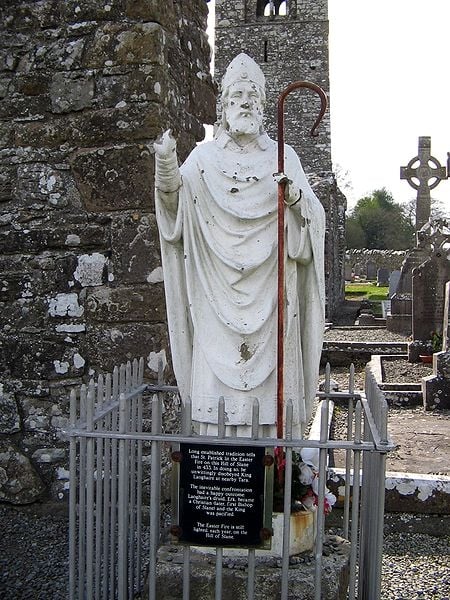
Hill of Slane Statue of St. Patrick and legend (Public Domain)
Many of the actual facts of the life of Patrick (or Maewyn which was believed to be his given name) have been distorted through the years with Irish folklore and stories, but there are some facts that can be verified. He was born either in Scotland, England, Wales or France (around the year 385 A.D.) but was definitely not Irish born. Most literature says that "Patrick" was kidnapped from his home by Irish marauders and was forced to work as a slave in Ireland for about 5 years. He finally escaped, returned home and spent time in monastery in Gaul, where he studied to become a priest.
Patrick was a Christian name which he adopted after he became a priest. He almost didn't become bishop of Ireland because his superiors didn't feel that he had the scholarship and finesse for the job, but during his time as bishop he converted many people and established churches, schools and monasteries all over Ireland. He worked as a missionary for 30 years, eventually transforming Celtic Druid, non-Christian Ireland into the Catholic Church's "Isle of Saints". Patrick retired to Saul in County Down and died on March 17 in or about the year 461. March 17 became his commemorative "death day". By the eighth century, Patrick had become the Patron Saint of Ireland.
Irish Song Medeley
Listen to a bit of Irish music to get you in the mood for St. Patrick's Day.
Irish Shamrock Blessing
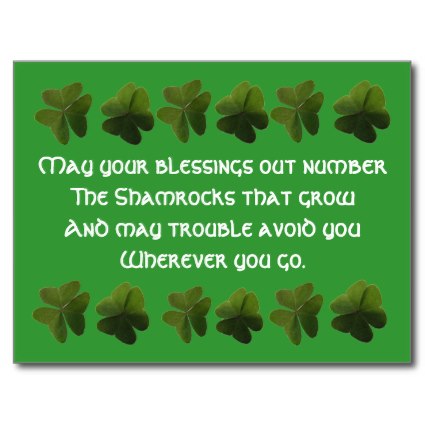
Green Shamrock
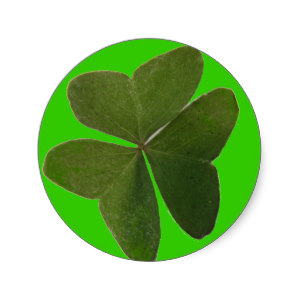
Shamrocks
There are many fantastic (and unsubstantiated) stories about the deeds of St. Patrick, but one that does have historical merit explains how the shamrock came to be associated with his holy day.
One of the primary church doctrines, that Peter continually taught, was that of the Trinity which is the belief that three Gods (the Father, the Son and the Holy Ghost) coexist in a single entity, but are also separate and distinct. During one sermon, while he was struggling to make his point, he happened to look down and spy the three-leaved shamrock. He plucked a leaf and while holding it towards his congregation explained that the three leaves represent the Father, Son and Holy Ghost and the stem represents the single Godhead from which they came. After St. Patrick's death, his converts wore a shamrock as a religious symbol on his feast day. Today, the shamrock continues to be a symbol of St. Patrick's Day and Ireland.
Irish Dancers
American St. Paddy's Day Celebrations
In America, the first celebration of St. Patrick’s Day occurred in 1737 and was sponsored by the Charitable Irish Society of Boston, Massachusetts. Interestingly, this was a Protestant organization which was founded to assist sick, homeless and unemployed Irishmen.
New York City holds the largest St. Patrick’s Day celebration which began in 1762 as a proud display of Irish heritage. Each year, as many as two hundred thousand people take part in this massive, wearin’ o’ the green.
Reference: Charles Panati, Extraordinary Origins of Everyday Things
Irish Curse
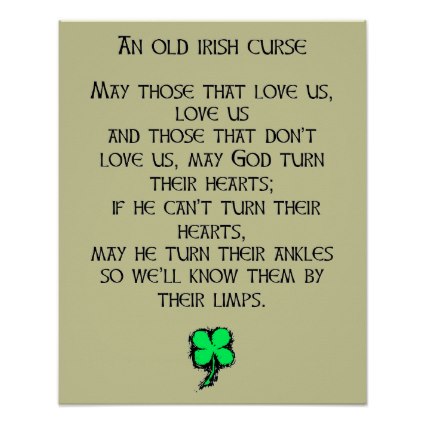
New Orleans Celebrations
Irish Channel
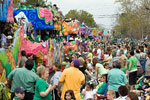
Like New York City, New Orleans was an immigration point for many Irish people. The section of the city called the Irish Channel is the center of the St. Patrick's Day celebration. Although there are parades all over the New Orleans Metro area, the one in the Irish Channel around Parosal's Restaurant and Bar is the largest and most colorful.
The first Irish Channel St. Patrick's Day celebration committee was organized in 1947. The committee still exists, despite some decline in the area and currently has a membership of over fourteen hundred. Each year the celebration begins with a mass before the parade. The parade, which contains hundreds of men in formal attire giving green beads and flowers, proceeds up Magazine Street, and is usually held on the Saturday before St. Patrick's Day.
St. Paddy's Day in the Irish Channel Vid
Irish Blessing Happiness
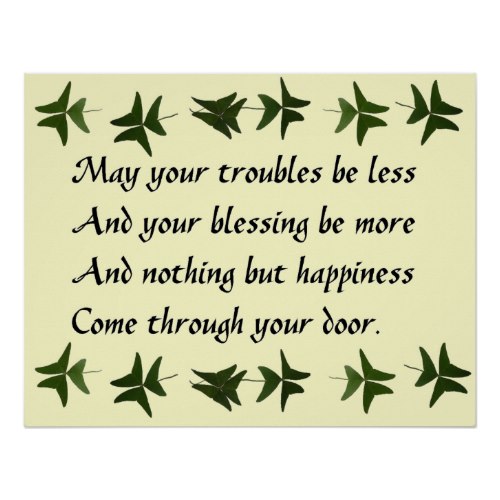
© 2009 Yvonne L B


